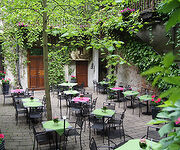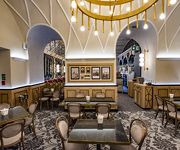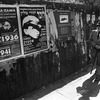Cracow Goes Modern
Anyone strolling through Cracow over the last few weeks will have noticed that something unusual is emerging in central town. We say unusual, but by international standards the development is perhaps not that peculiar. Yet by the norms of this nostalgic city, the appearance is decidedly daring. We're talking, of course, about the pavilion that's shooting up on Plac Wszystkich Swietych (All Saints Square). For besides the Bunkier Sztuki art gallery, which is rather discreetly tucked away by the Planty Gardens, the pavilion will be the first significant modern building in Cracow's Old Town.
So just what exactly is this building? And equally intriguingly, what finally gave the authorities the confidence to go modern? Well, to start with, the building is a Pavilion of Culture and it should open for the 750th Anniversary of the Act of Cracow's Location (that's June 2nd this year). The building will house promotional offices for Poland's 'cultural capital' and an information office for visitors and locals that deals with all things artistic in the city. The project has been in the pipeline for several years, and it was originally ear-marked for 2000, when Cracow was declared European City of Culture.
The project has the backing of grand figures such as Andrzej Wajda, who won an Oscar for life-time achievement seven years ago. And the commission itself has gone to Krzysztof Ingarden, acclaimed Cracovian architect and creator of the celebrated Polish pavilion at the Japan Expo 2005.
However, Mr Ingarden has been faced with some unusual challenges in the project. Firstly, he had to design on an extremely tight space in the heart of the Old Town. Second, he was obliged to incorporate the complex range of medieval cellars that lay beneath the site. And thirdly, he had to design the building so as to heighten the impact of a highly idiosyncratic element. That element is a trio of stained-glass windows by genius of troubled genuises, Stanislaw Wyspianski, (1869-1907), who's own centenary falls this year. The three windows were originally intended for Wawel Cathedral a century ago, but the clergy found the designs too modern. And a tad too dramatic as well. However, the fantastical designs have been resurrected by Piotr Ostrowski, an inspired young artist who has been championed by Mr. Wajda. So as to lend the right quality of light, or indeed lack of it at certain instances, Mr. Ingarden has created a novel solution of using movable bricks on the pavilion's facade to help moderate the light impact. The colours of the tiles echo the bricks of the churches of the Franciscans and Dominicans, which flank the square.
With little over a month to go before the grand opening, the pace of building is frenetic. And there is much interest in how the reborn windows will look when placed inside a non-ecclesiastical context. It's a bold step for Cracow, and all involved are hoping that allies will be won by the completed object.

 Kawaleria Szarza Smaku
Kawaleria Szarza Smaku
 Europejska
Europejska
 Krakow Pinball Museum
Krakow Pinball Museum






